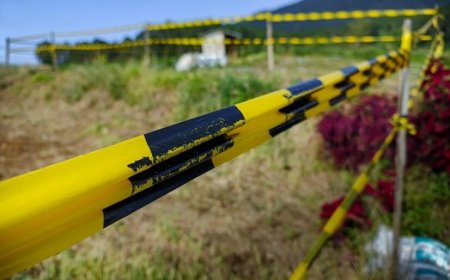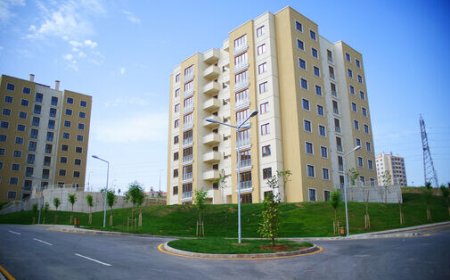Smart Traffic Signal Violation Detection for Safer Cities
Enhance road safety with traffic signal violation detection systems that identify red-light offenses and improve compliance through automation.

Introduction
Urban traffic has become a defining challenge of modern city life. As vehicles and pedestrians compete for space on increasingly congested roads, the risk of traffic signal violationsand the accidents they causecontinues to rise. Red-light jumping, illegal turns, and improper lane changes at intersections are among the most common and dangerous infractions. These behaviors not only disrupt traffic flow but also endanger lives, especially in high-density urban areas.
To address this growing concern, many cities are adopting intelligent enforcement mechanisms, such as smart traffic signal violation detection systems. These AI-powered tools are helping authorities reduce human error in enforcement, improve compliance, and ultimately create safer, more efficient urban mobility systems.
The Urban Risk of Traffic Signal Violations
Intersections are among the most accident-prone locations on any road network. According to global road safety statistics, a significant percentage of urban road crashes occur at or near intersectionsmany due to traffic signal violations. Whether its impatience, distraction, or disregard for the rules, drivers often run red lights, putting themselves and others in harm's way.
Traditional methods of managing these violationslike manual policing or passive surveillanceare no longer sufficient. These approaches are limited by manpower constraints, inconsistent enforcement, and a lack of real-time response. Urban environments demand smarter, scalable, and proactive solutions.
What Is Traffic Signal Violation Detection?
Traffic signal violation detection refers to the use of automated technologiestypically involving cameras, sensors, and artificial intelligenceto monitor intersections and identify vehicles that violate red-light or lane-use regulations.
These systems can detect:
-
Red-light violations
-
Unauthorized lane changes
-
Stop-line violations
-
Wrong-way entries
-
Overspeeding at junctions
Upon detection, high-resolution footage and data such as vehicle number plates, timestamps, and location are captured and stored. This information can be used for real-time alerts or back-end enforcement such as issuing digital challans or citations.
Deployed effectively, these systems help build a culture of compliance by ensuring violators are consistently identified and penalizedwithout relying on human supervision.
Benefits of Smart Violation Detection Systems
1. Real-Time Monitoring and Response
One of the standout advantages of smart traffic signal violation detection systems is their ability to provide real-time monitoring of high-risk intersections. As soon as a violation occurs, the system automatically captures and processes the incident, enabling authorities to respond swiftlywhether through immediate alerts or backend ticketing.
2. Reduction in Road Accidents
The presence of enforcement systems has a deterrent effect on driver behavior. When drivers know that intersections are being monitored by intelligent cameras, they are less likely to engage in risky actions. This leads to a measurable decrease in red-light jumping and collision rates at monitored junctions.
3. Data-Driven Urban Planning
These systems collect massive volumes of data over timetraffic volumes, violation frequency, peak hour behaviors, and more. This data can be used by city planners and traffic departments to redesign intersection layouts, optimize signal timings, or implement targeted awareness campaigns. In essence, it transforms intersections from risk zones into intelligent data points that inform better governance.
4. Operational Efficiency Through AI
The integration of artificial intelligence into these systems enables more accurate object detection, vehicle classification, and movement prediction. In fact, AI Video Analytics Improves Operational Efficiencies across urban surveillance and traffic enforcement. These systems learn over time, refining detection patterns and reducing false positives, which leads to smoother operations and less manual intervention.
5. Automated, Contactless Enforcement
In a post-pandemic world where contactless solutions are preferred, smart violation detection systems offer a hygienic, digital-first way to enforce traffic laws. By reducing the need for on-ground personnel, cities can enhance safety while saving on enforcement costs.
The Role of AI and Video Analytics
At the heart of modern traffic enforcement lies artificial intelligence. AI enhances the systems ability to interpret visual datadetecting not just movement, but context. For example, AI can distinguish between a vehicle making a legal right turn on red and one that jumps the signal altogether.
Video analytics, when paired with AI, creates a multi-layered approach to monitoring. These platforms dont just record footage; they analyze patterns, identify anomalies, and generate actionable insights. This enables authorities to prioritize enforcement in areas with the highest violation rates and adjust infrastructure to prevent recurring issues.
Moreover, machine learning allows these systems to continuously improve, adapting to changing traffic conditions, lighting variations, and weather-related visibility issues.
Implementation Challenges and Considerations
While the benefits are substantial, implementation of traffic signal violation detection systems does come with its challenges:
-
Camera Placement: Ensuring optimal angles and unobstructed views is critical for accurate violation capture.
-
Lighting and Weather Conditions: Systems must be resilient to nighttime visibility issues and adverse weather like rain or fog.
-
Data Privacy and Governance: With video surveillance comes the responsibility of data protection. Municipalities must have clear policies in place for data storage, access, and retention.
Conclusion
Urban intersections are dynamic, high-risk zones that demand equally dynamic safety solutions. Smart traffic signal violation detection systems represent a leap forward in enforcing compliance, reducing accidents, and promoting data-driven city planning.
By leveraging the power of AI and real-time analytics, these technologies offer a scalable, efficient, and impactful way to transform how cities manage trafficand protect lives. As urban populations continue to rise, so too must our commitment to intelligent, proactive road safety infrastructure.



































